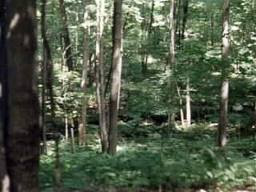
And you only get paid for the increased amount of carbon your trees store. You have to prove that you’re increasing the amount of carbon absorbed by actively managing these woods. You can’t just rent out your woodlot to qualify for these programs. This is key for the carbon markets this forest is tied to. Computer models will predict how much carbon the forest can store. MURRAY: The information will help the team decide things like what trees to cut, and when. An independent auditor will come in later to verify the numbers, and will do it again every five or ten years on permanent plots. MURRAY: Eckley records the diameter of the tree and other notes about the tree’s health and timber value into a hand-held device.

MURRAY: Banker loops a tape measure around the trunk of the tree.ĮCKLEY: OK. ECKLEY: Let’s start with that white pine, right ahead of you. The Nature Conservancy’s Mike Eckley calls out the trees he wants to be measured. Forester Mark Banker pounds rebar into the ground to mark one of a 1,000 or so small plots that will be documented. MURRAY: The look begins with an inventory of trees. Their next step is to take a really close look at their 5000 acre property. With that in mind, the city of Lock Haven in north central Pennsylvania has just signed on with the Conservancy. Carbon markets let companies and others pay forest owners to store CO2 to compensate for their own greenhouse gas emissions. Timber with an FSC certification can be sold for more than regular wood, kind of like organic for trees. MURRAY: FSC is the Forest Stewardship Council. WILLIAMS: Several years ago, we began conversations with the Nature Conservancy and the intent was to combine FSC forest certification with the creation of carbon credits for landowners that wanted to participate in that market. MURRAY: Roger Williams is the president of Blue Source, the carbon brokerage. WILLIAMS: For the landowner they get kind of a one-two punch.

That is, a way to keep forests healthy while also making money off them. Working Woodlands is one example of what you might call value-added forestry. A model project that the Conservancy has put together with Blue Source, a carbon credit developer in California. MURRAY: Bethlehem is the first partner in The Nature Conservancy’s Working Woodlands program. REPACH: We’re anticipating, to be on the safe side, anywhere between $75,000 to $100,000 annually. That’s according to Steve Repach, the authority’s director. Bethlehem, Pennsylvania Water Authority gets paid by Chevrolet for each ton of CO2 that the trees in its 22,000 acre forest pull out of the air and store in their trunks and roots. MURRAY: Chevy Equinox is not just a smallish SUV the auto giant is marketing to the young and hip, it’s also paying to keep a forest a forest.

MURRAY: A Pennsylvania forest has a new, surprising ally. The Allegheny Front’s Ann Murray has our story.

These are now the subject of a value-added program developed by the Nature Conservancy that is designed make money for forest owners while still sequestering carbon and keeping the air and water clean. The state named after founder William Penn’s woods – Pennsylvania – has plenty of forests, about 70 percent in private hands. An acre of healthy forest can pull as much as three or more tons of carbon out of the air each year, and the bigger the tree the more carbon it can store or sequester in its trunk and roots. When it comes to fighting climate disruption, trees are some of the most effective front line soldiers. CURWOOD: It’s Living on Earth, I'm Steve Curwood.


 0 kommentar(er)
0 kommentar(er)
